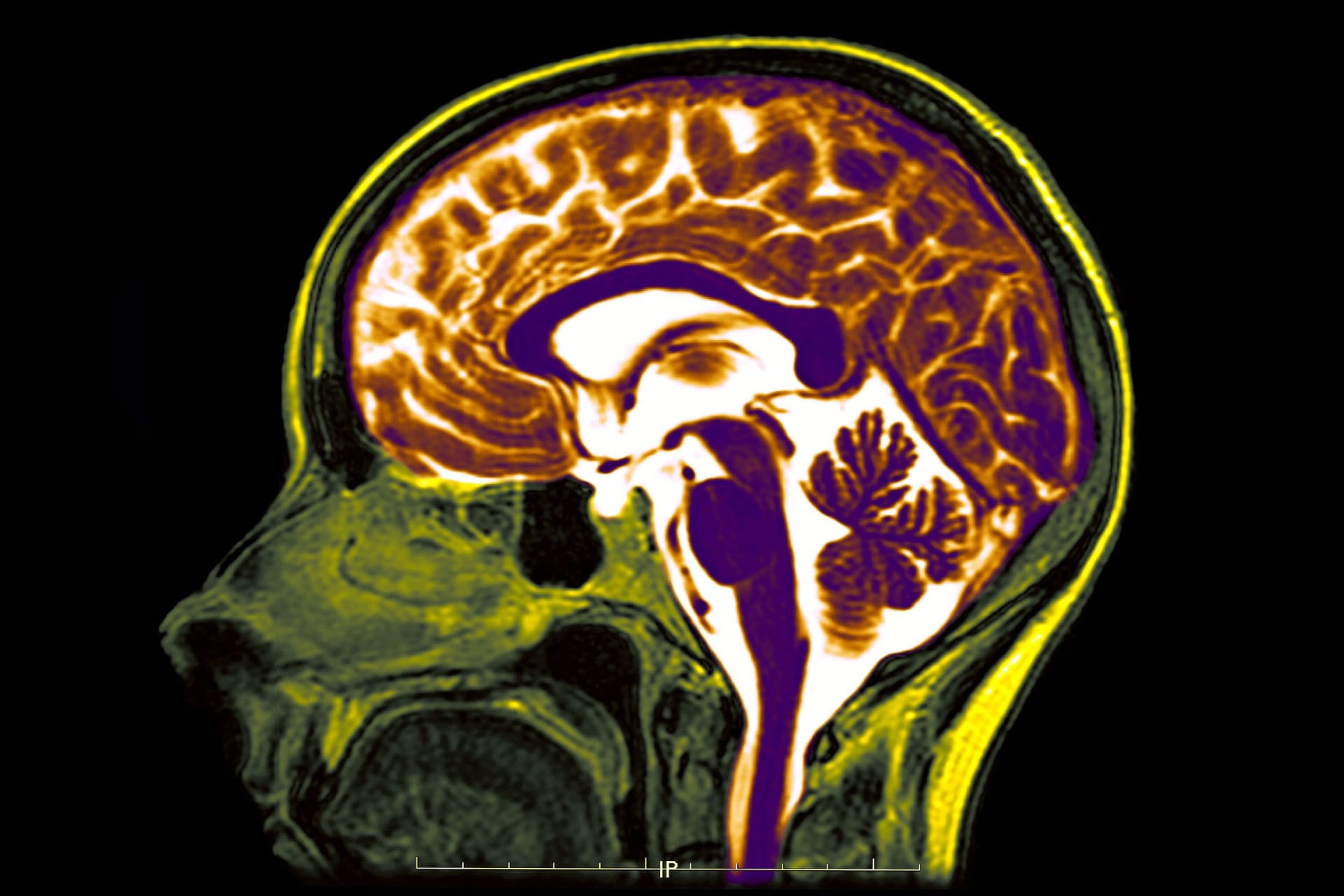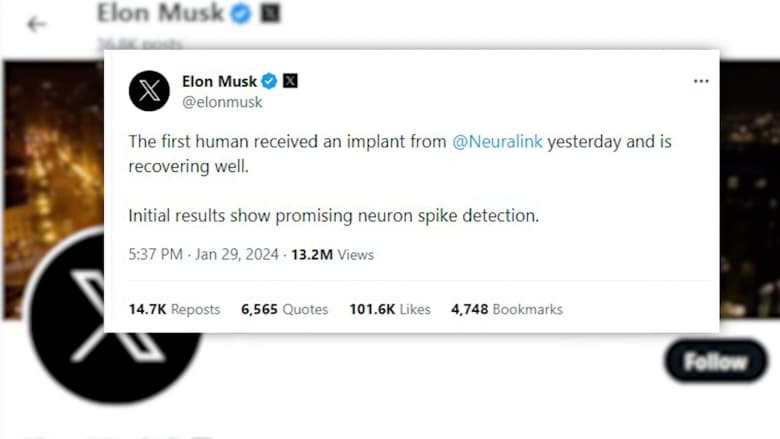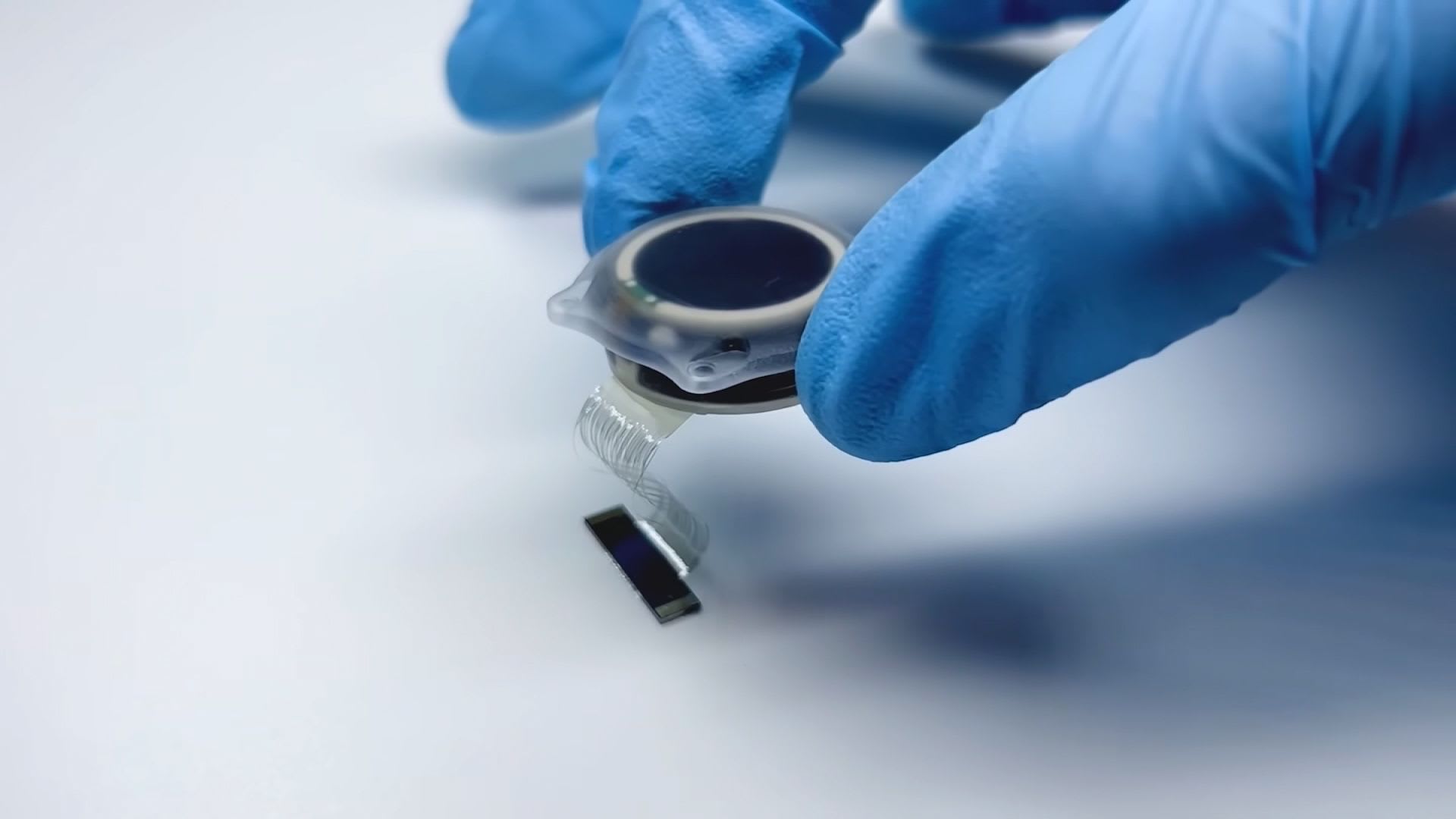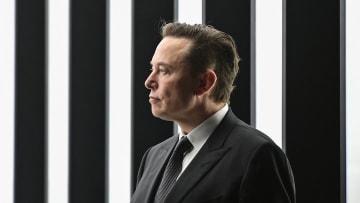دبي، الإمارات العربية المتحدة (CNN) -- قامت شركة "Neuralink" الناشئة التابعة لإيلون موسك بزرع، شريحة كمبيوتر في دماغ شخص، الأحد، وفق ما أفاد به رجل الأعمال الملياردير في منشور على منصة "X" (تويتر سابقًا)، الإثنين، رغم أنه لم يُقدّم سوى القليل من التفاصيل.
رغم أنّ ماسك وشركته حظيا باهتمامٍ كبير لمحاولة إنشاء واجهة بين الدماغ والحاسوب، إلا أنّ هناك عدد من الشركات الأخرى أيضًا في هذا المجال، بما في ذلك "Synchron"، وهي أول شركة تحصل على تصريح إدارة الغذاء والدواء لاختبار جهاز على البشر في عام 2021.
ومنذ ذلك الحين، بدأت "Synchon" في تسجيل المرضى وإخضاعهم لعمليات الغرس في تجربة مختبرية.
ما هي عملية زرع شريحة في دماغ بشري؟
يعرّف الباحثون زرع شريحة في الدماغ البشري بأنّه صلة الوصل بين الدماغ والحاسوب الذي سيسمح للشخص باستخدام أفكاره للتحكم بجهاز مثل الكمبيوتر أو الهاتف.
كيف تعمل؟

وتوازي شريحة "Neuralink" العملة المعدنية تقريبًا، فيما تُعتبر شريحة "Synchron" صغيرة وتُشبه الدعامة، وتدخل في الأوعية الدموية بالدماغ.
وتتضمن الشرائح العديد من الأقطاب الكهربائية التي لا يمكنها قراءة أفكار الشخص، لكنها في الأساس تراقب وتفسر الإشارات التي ترسلها الخلايا العصبية التي تستخدم الكهرباء والمواد الكيميائية لإرسال إشارات من الدماغ إلى بقية أجزاء الجسم، لمساعدته في الحركة والتنفس، والتحدث، وتناول الطعام.
وقال الدكتور بول نويوجوكيان، أستاذ الهندسة الحيوية وجراحة الأعصاب الذي يدير مختبر التواصل الدماغي في جامعة ستانفورد، إنّه "باستخدام التطوّرات الحديثة في أجهزة الكمبيوتر التي تحققت خلال الثلاثين أو الأربعين عامًا الماضية، بات لدينا أخيرًا قوة معالجة كافية لبناء وتدريب خوارزميات رياضية من أجل وضع تقديرات لما قد تبدو عليه تلك المعلومات، وأصبح لدينا أخيرًا القدرة الحاسوبية على إجراء هذه التقديرات في الوقت الفعلي".
وأضاف نويوجوكيان أنه رغم أنّ التكنولوجيا أحدث، إلا أنّ العمل يعتمد على العلوم الأساسية حول كيفية تحكم الدماغ في الحركة التي فهمها العلماء منذ أكثر من 100 عام.
ما الذي يجعل هذه التكنولوجيا تنجح؟
كان لا بد من توصيل التكنولوجيا السابقة بالكمبيوتر. لكن اليوم تعمل شريحة "Neuralinnk" ببطارية يمكن شحنها لاسلكيًا والاتصال بتطبيق "Neuralink" الذي يقوم بفك تشفير البيانات. من جهة أخرى، تتصل شريحة "Synchron" بوحدة قياس عن بعد، تتصل بدورها في جهاز الكمبيوتر.
كيف سيتم استخدام هذه الأجهزة؟
يتمثل الهدف الأولي بمساعدة شخص أصيب بسكتة دماغية، أو يعاني من مرض تنكس حركي مثل التصلّب الجانبي الضموري، أو مشاكل جسدية أخرى، على التواصل مباشرة من خلال الغرسة بجهاز خارجي مثل الهاتف، أو الجهاز اللوحي، أو الكمبيوتر.
في عام 2021، أوضحت شركة "Neuralink" كيفية عمل ذلك مع قرد يُدعى بيجر، والذي زُرعت شريحتين لاسلكيتين في دماغه. سمحت الشريجتان لبيجر بالتحكم بمؤشر بواسطة أفكاره، وممارسة لعبة تُسمى "mind pong".
متى ستكون هذه الشرائح متوافرة؟
أوضح نويوجوكيان الذي عمل مع أكاديميين آخرين على هذا النوع من الأبحاث لعقود أن "لا شيء في هذا المجال يحدث بين عشية وضحاها". لكن شهد الابتكار التقني ازدهارًا خلال الفترة التي تتراوح بين الـ5 والـ10 سنوات الماضية، مع دخول المزيد من شركات الهندسة العصبية في هذا المجال.
رغم ذلك ، فإن حصول هذه الشرائح على موافقة إدارة الغذاء والدواء الأمريكية يستغرق وقتًا لأن "الخطر على السلامة الفردية مرتفع". يمكن أن تشمل المخاطر النزيف أو الالتهابات. غالبًا ما يستغرق الأمر ما بين 10 و20 عامًا، لحصول الغرسة على الموافقة، لا سيما تلك التي تتضمن مثل هذه التكنولوجيا الجديدة.
ويُعتبر نويوجوكيان واثقًا بأن هذه التكنولوجيا ستساعد الناس في المستقبل، مؤكدًا أنه "ما من سبب يدعو لعدم نجاحها". وتابع: "العلم موجود وسليم، وهو موجود منذ عقود، وهذا يمنحني الكثير من الضمانات. لأنه أمر ممكن".


